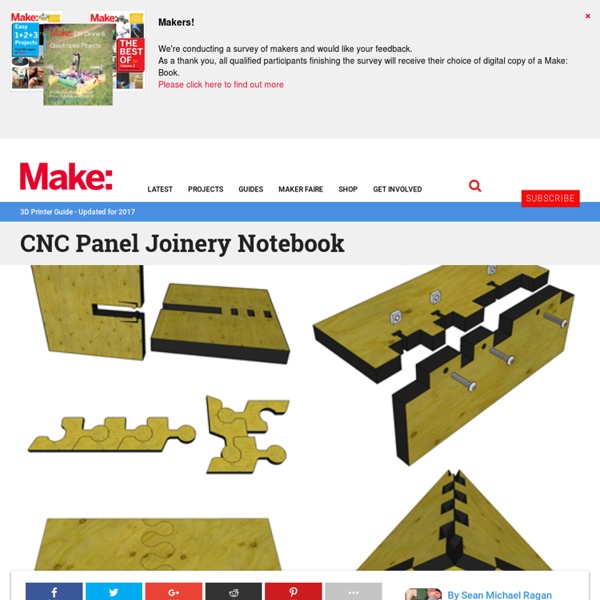CNC Panel Joinery Notebook

Lite6 - A high quality, low cost HotEnd for everyone
Posted On: 2015-04-01 13:32:47 ; Read: 403 time(s) Introduction We know that not everybody needs the all-metal high-temperature performance of an E3D-v6. We’ve come to realise that there exists a need for a hotend that is reliable, and puts out great prints, but meets the budget of those who are just getting started in 3D printing. Lite6 is our answer to that need. Lite6 Assembled Lite6 does not supersede v6 - more compliments it, think of Lite6 as v6’s little brother. E3D-Lite6 v.s E3D-v6 Features: Aimed at printing everyday materials. Lite6 cannot offer the same high-temperature performance as E3D-v6, which means that you can’t print higher-performance engineering plastics like Nylon, Polycarbonate, and ColorFabb Carbon-Fiber XT. Some nice E3D-Lite6 prints in PLA and ABS Lite6 has a slightly shorter effective melt-zone than v6, which does mean that print speeds are more modest, but still completely appropriate for all but the very fastest of 3D printers on the market. Exceptional Reliability
Education Theory/Constructivism and Social Constructivism - UCD - CTAG
"Constructivism is the philosophical and scientific position that knowledge arises through a process of active construction."(Mascolol & Fischer, 2005) "As long as there were people asking each other questions, we have had constructivist classrooms. Constructivism, the study of learning, is about how we all make sense of our world, and that really hasn’t changed."(Brooks, 1999) Background Constructivism and Social Constructivism are two similar learning theories which share a large number of underlying assumptions, and an interpretive epistemological position. Underlying Assumptions Jonassen (1994) proposed that there are eight characteristics that underline the constructivist learning environments and are applicable to both perspectives: Constructivist learning environments provide multiple representations of reality. Epistemology The default epistemology in education is an empirical/reductionist approach to teaching and learning. Main Theorists Dewey Piaget Bruner Vygotsky According to Vygotsky:
Joe's Cnc Home
Gear Generator
Animation: * Shift + Enter: Set RPM of the selected gear #0 - N8 - ratio: 1:1 - RPM: 6#1 - N16 - ratio: 2:1 - RPM: 3#2 - N12 - ratio: 2:1 - RPM: 3#3 - N60 - ratio: 10:1 - RPM: 0.6 Connection properties Gear properties * Shift + Enter: modifies the Diametral pitch Download Display Units Gear Generator is unitless: if you wish it's inches, cm or millimeters. About Gear Generator is a tool for creating involute spur gears and download them in DXF or SVG format. Why this tool was created? Support: abel@iparigrafika.hu Notes about browser compatibility: all new major browsers are supported (i didn't tested IE), but unfortunately Chrome can't render SVG circle correctly. The downloaded DXF file can be opened with AutoCad 2013 or newer versions. Update 1.5: Fixed DXF resolution issue. Update 1.4: TA-DA: Added internal gear support, and the ability of positioning the first gear. Update 1.3: Fixed DXF file format. On YouTube Check out other tools I made:Print Charts, Flip.World, HTML Spirograph.
Cults ・ Buy and sell 3D models for 3D Printer
Vector Art 3D, Inc. - Dimensional Clip Art for CNC Routing and Engraving
Фрезы для ЧПУ. Купить фрезы для чпу по низким ценам Украина. Интернет магазин Frezy4pu
3datdv | Blog from the 3D at DV Challenge team
VCarve Pro
VCarve Pro provides a powerful but intuitive software solution for 2D design and calculation of 2D and 2.5D toolpaths for cutting parts on a CNC Router. It includes the functionality demanded by commercial shops and users, while remaining incredibly easy to use and affordably priced. VCarve Pro is used by cabiner makers, wood workers, sign makers, prop makers, plastic fabricators, hobbyists and in many other applications. The software can import 2D designs from other programs but also includes a full set of drawing and editing tools with advanced layout options such as True-Shape Nesting.
Related:



